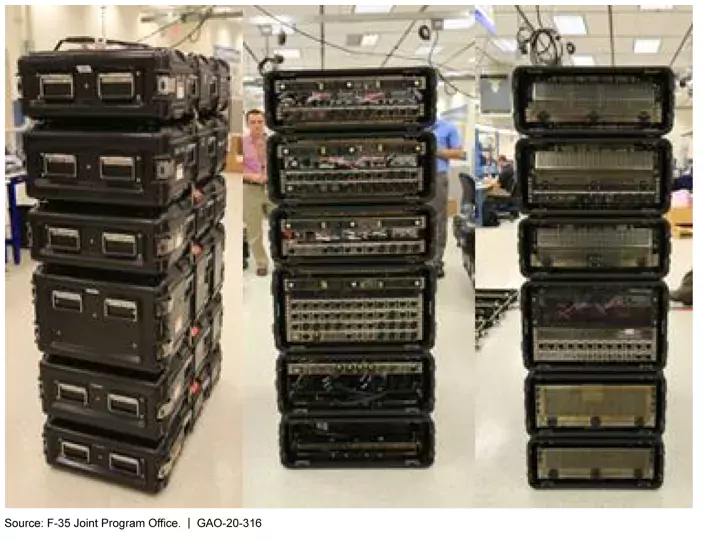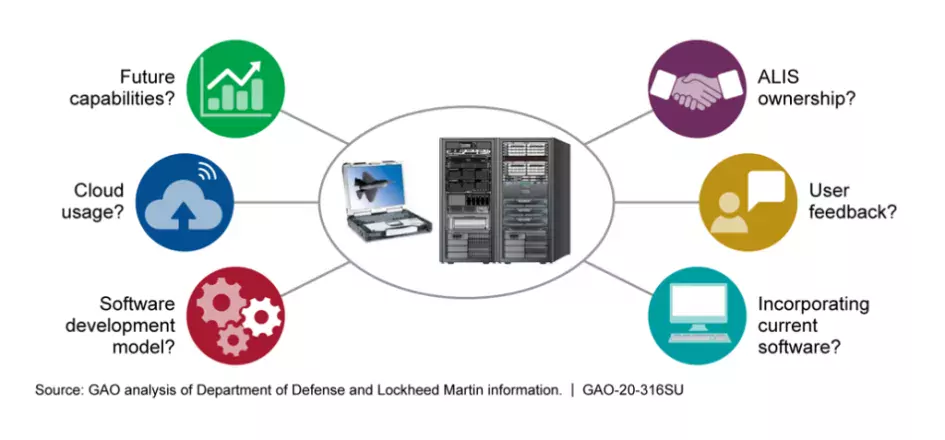The F-35: ALIS in the Looking-Glass
The F-35 is the most modern fighter jet in the world. It’s the Department of Defense’s most ambitious and costly weapon system. It’s also supposed to be one of the smartest.
It runs on the Autonomic Logistics Information System, a hardware and software system known as ALIS (read: “Alice”). This smart system is supposed to manage everything the F-35 fleet needs to operate at peak condition.
But ALIS doesn’t actually work the way it’s supposed to. In today’s WatchBlog, we’re taking a look at ALIS—and what the Department of Defense plans to do with it in the future.
Image

What is ALIS supposed to do?
ALIS is supposed to monitor system health and take action to improve it—by scheduling maintenance, for example, or ordering parts.
It’s also supposed to help military leadership keep tabs on the fleet—letting them know which planes are flight-ready. Software in ALIS is intended to help plan missions and record information for debriefing.
There’s even an application in ALIS intended to track training for pilots and maintainers—keeping them apprised of any developments in the F-35’s technology or capabilities.
What’s going wrong?
Even after years of development and testing, the system doesn’t work as intended—which officials recognize is particularly problematic because of how interconnected the system is with the F-35.
Because critical data in ALIS is often inaccurate or missing, F-35 maintainers have to manually collect and track information that should be automatically captured in the system. Tracking information in this way is both time-intensive and risky: when key data used to assess an aircraft’s safety has to be tracked using Excel spreadsheets, there is a chance that something critical could get overlooked.
Also, ALIS is bulky and hard to deploy. The server units (pictured here) that collect and analyze ALIS’s aircraft data each weigh approximately 200 pounds and require at least two people to lift. Personnel have to take several of these server units with them on a deployment. The units need a whole room to operate, so it can be hard to find a place to store them on a ship, for example.
Image

F-35 personnel who use ALIS told us that while it’s working better than it used to, the user experience is poor. The interface isn’t intuitive, it’s hard to navigate, and standard functions can take much longer to complete than expected. And that training application? None of the 5 locations we visited are currently using it. They told us that the application doesn’t usually work—they use more user-friendly legacy systems instead.
What are the next steps?
The Department of Defense knows the system needs to be re-designed, and has decided to replace ALIS with a future system that it has named the F-35 Operational Data Integrated Network (ODIN). However, the Department has yet to answer some critical questions about the effort. How much of ALIS will be incorporated in ODIN? Does the Department have access to the data it needs to play a more active role in management of the new system? The figure below shows these technical and programmatic uncertainties.
Image

As DOD proceeds with developing its new system, it will be imperative for the department to carefully consider and assess these questions.
Furthermore, since the Department has not developed a performance measurement process for ALIS, or determined how ALIS issues affect F-35 fleet readiness, how will the Department incorporate these efforts into its current and future systems?
Our recommendations are to help the Department develop a strategy for ALIS’s upcoming re-design. Check them out in our report.
GAO Contacts
Related Products

GAO's mission is to provide Congress with fact-based, nonpartisan information that can help improve federal government performance and ensure accountability for the benefit of the American people. GAO launched its WatchBlog in January, 2014, as part of its continuing effort to reach its audiences—Congress and the American people—where they are currently looking for information.
The blog format allows GAO to provide a little more context about its work than it can offer on its other social media platforms. Posts will tie GAO work to current events and the news; show how GAO’s work is affecting agencies or legislation; highlight reports, testimonies, and issue areas where GAO does work; and provide information about GAO itself, among other things.
Please send any feedback on GAO's WatchBlog to blog@gao.gov.




